Removing haze from the outside of your windshield is vital to clear visibility. Start by giving it a good wash with a glass cleaner. Wipe it in circular motions to catch all the grime. If the haze lingers, mix a vinegar and water solution and spray it on.
Let it sit for a few minutes. Use a clean microfiber cloth to buff it off. For stubborn spots, mix baking soda with water. This can act as a gentle scrub. It cuts through any film without scratching the glass.
Be thorough around the edges, where haze often collects. Rinse well to remove any residue from the cleaning products. Finish with a dry cloth, going over the glass until it’s spotless and streak-free.
Why You Need a Clean Windshield to Drive Safely
Think of your windshield as the lens through which you see the world while driving. Any grime or haze obstructing your view can make driving dangerous. You’re squinting through a streaky haze.
That haze is the difference between seeing a pedestrian in time and having a close call in low visibility. It’s not just about keeping things clean; it’s about seeing clearly, especially when it counts.
A clean windshield means no glare or smudges catching the light and messing with your view. And in the end, it’s about keeping you and everyone around you safer on the road.
Why Does Haze Even Happen?
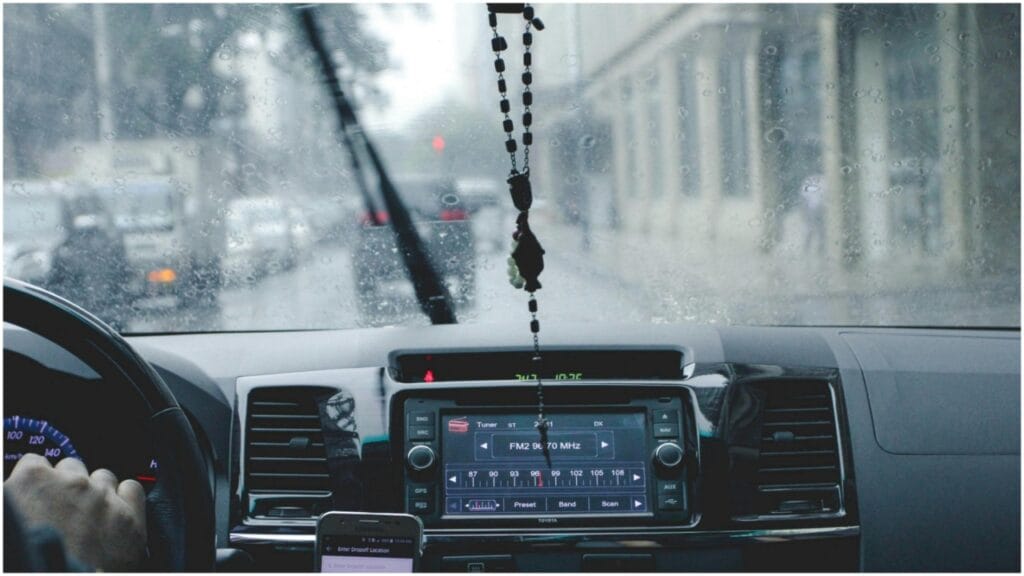
Exhaust and pollution particles mix with humidity, baking onto your windshield. Road salt, especially in winter, also likes to cling to glass. Oily residues, which can come from just about anywhere, are also problematic.
This is more prevalent in cities. Cars leave behind a lovely combination of grime and oil. The sun adds to the problem. It bakes all this gunk onto your windshield until it seems like part of the glass.
These layers become more burdensome to remove each time until you eventually get a permanent haze.
Step-by-Step: How I Remove Haze from My Windshield
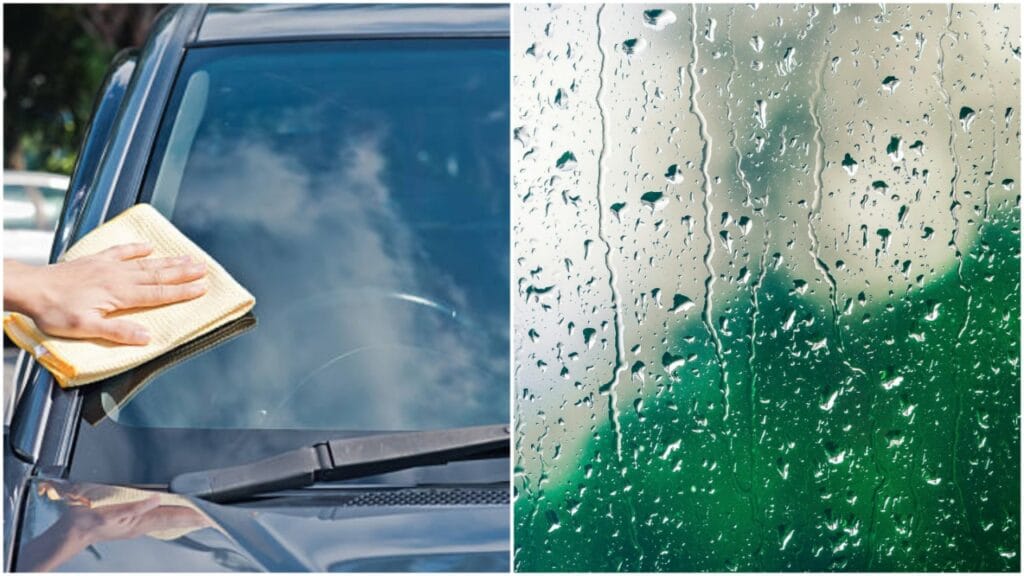
Not all cleaning techniques are created equal when it comes to haze removal. I’ll share a few tried-and-true methods that don’t involve fancy cleaners or tons of elbow grease.
Start with Good Ol’ Glass Cleaner
Spray your windshield with a basic glass cleaner. You’ll want something without ammonia.
Spray it on liberally, then wipe it down in small, circular motions with a microfiber cloth. It’s incredible how much a basic cleaner can lift off the glass.
The Vinegar and Water Trick
Mix equal parts vinegar and water. I know vinegar doesn’t smell great but works wonders on residue.
Spritz the solution onto your windshield and let it sit for a minute or two. Then, using a new cloth, buff it out. You’ll be surprised how much more straightforward things get.
Baking Soda for the Toughest Spots
Baking soda is best when you’ve tried everything, and those stubborn spots won’t budge. Mix baking soda with water to make a paste.
Dab on the problem spots and gently rub them with a cloth. This little paste works like a charm on sticky residues and doesn’t harm your glass.
Afterward, rinse off the baking soda, as you don’t want any powdery residue left behind.
Don’t Forget the Final Rinse
Once the glass is clean, rinse the windshield with plain water. This removes any remaining cleaner or vinegar.
If left to dry on their own, they can sometimes leave streaks. Dry with another microfiber cloth, and you’re good to go.
Maintenance Tips to Keep Your Windshield Haze-Free
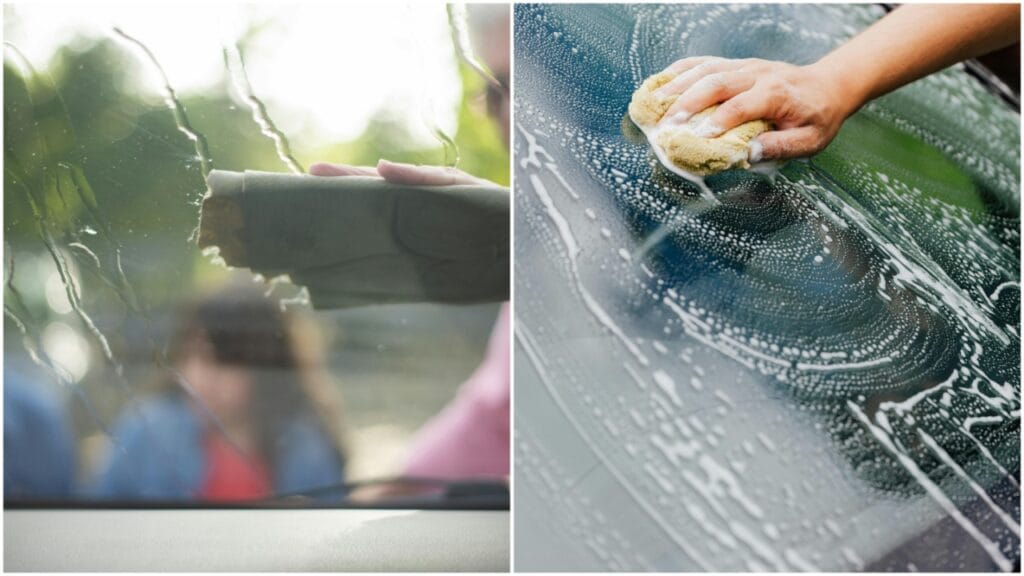
Here’s a quick little trick: keep a travel-sized bottle of glass cleaner and a microfiber cloth in your glove box.
Every so often, especially after a long drive or being parked under a tree, give the windshield a quick wipe.
When It’s Time to Call in the Professionals
Auto glass experts have tools and compounds to tackle stubborn film without risking your windshield’s integrity.
A professional cleaning is a quick visit to an auto shop. It also can be a mobile service that comes to you. It’s worth it if it means clear, haze-free glass.
My Last Bit of Advice: Don’t Let Haze Stick Around
When you let haze build, you risk your visibility and the overall condition of your windshield.
That buildup can etch into the glass, making it vulnerable to cracks or chips over time.
Worse, specific lighting creates a glare that can mess with your vision and make night driving a nightmare.
Understanding What Causes Persistent Haze
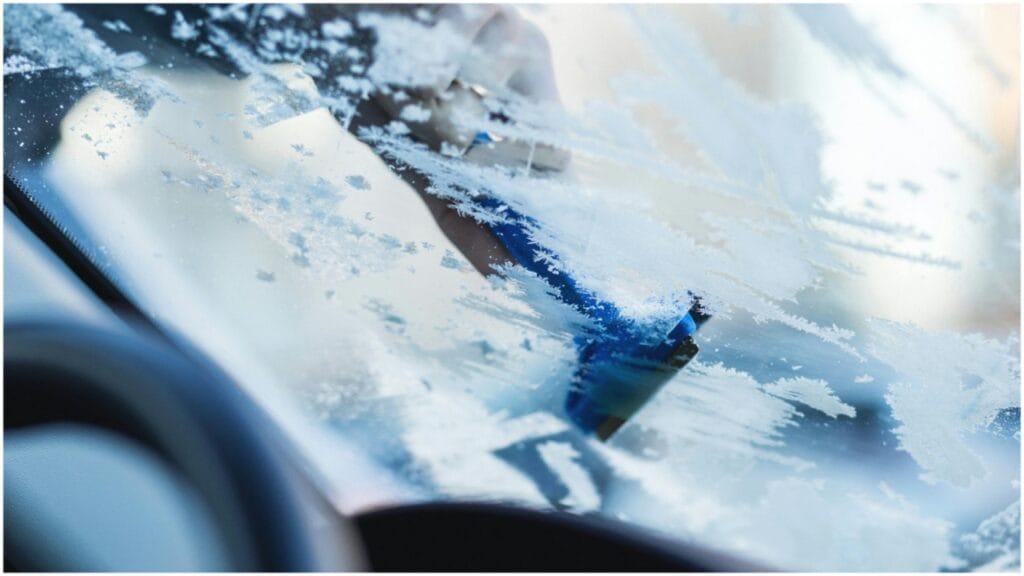
Haze isn’t just a product of dust or dirt. It’s often a stubborn mix of pollution, oils, and other environmental particles.
Every time you drive, microscopic bits of grime stick to your windshield. Those particles can bake right in if it’s sunny, especially in hot weather.
Over time, haze bonds with the glass, becoming more challenging to remove. Even air conditioning can contribute.
Temperature changes cause condensation, which leaves behind a thin layer of mineral residue. That’s why haze has become such a common issue for many drivers.
The Importance of Regular Cleaning
Regular cleaning is the secret to a crystal-clear windshield. Once haze builds up, it takes more work to remove.
A weekly wipe-down prevents particles from layering on top of each other. Quick cleans keep things fresh, saving you from deep scrubs later.
Think of it as windshield maintenance. It’s small, but it keeps your view clear and safe.
Why Haze Shows Up More in Humid Weather
Moisture in the air collects on the windshield, making dirt or oil more visible. That moisture even helps grime stick more firmly to the glass.
When humidity levels rise, it feels like haze appears out of nowhere. If you drive in a naturally humid climate or near the ocean, mist continuously works against you.
In those cases, having a quick routine for clearing haze can save you a lot of frustration.
The Role of Quality Windshield Wipers

Windshield wipers play a significant role in haze prevention. Old or worn-out wipers can spread grime instead of clearing it. Over time, wipers accumulate oils and dirt, which can be left behind as streaks on the glass.
So, check your wiper blades. Replacing them every six months or so can make a difference.
Avoiding Common Mistakes That Make Haze Worse
Some cleaners, especially those with ammonia, can worsen haze. Ammonia-based products are acceptable for household mirrors but can leave a film on car glass.
Another common mistake is using paper towels instead of microfiber cloths. Paper towels leave behind tiny fibers that stick to the windshield, contributing to haze.
Finally, wiping in straight lines instead of circular motions can spread grime rather than lift it off. Small changes in your routine can have a significant impact on clarity.
How Weather Conditions Affect Haze Formation
Different weather conditions cause various types of haze. Hot, dry climates can bake debris onto the glass, while cold weather creates a foggy film due to condensation.
And if you’re dealing with pollen season, that’s a whole other layer of gunk waiting to build up. In snowy areas, salt from the roads clings to the glass.
Adapting to these seasonal changes with a tailored cleaning routine can help keep haze at bay year-round.
The Little-Known Benefits of Water Repellent
Applying a water repellent on your windshield can help reduce haze in the long term. Repellents create a slick surface that water, oil, and even dirt can’t cling to as quickly.
This treatment minimizes the need for constant cleaning and makes any grime easier to wipe away. It’s a quick, extra step, but it can make a big difference in keeping your windshield clear.
How Your Car’s Interior Affects the Exterior Haze
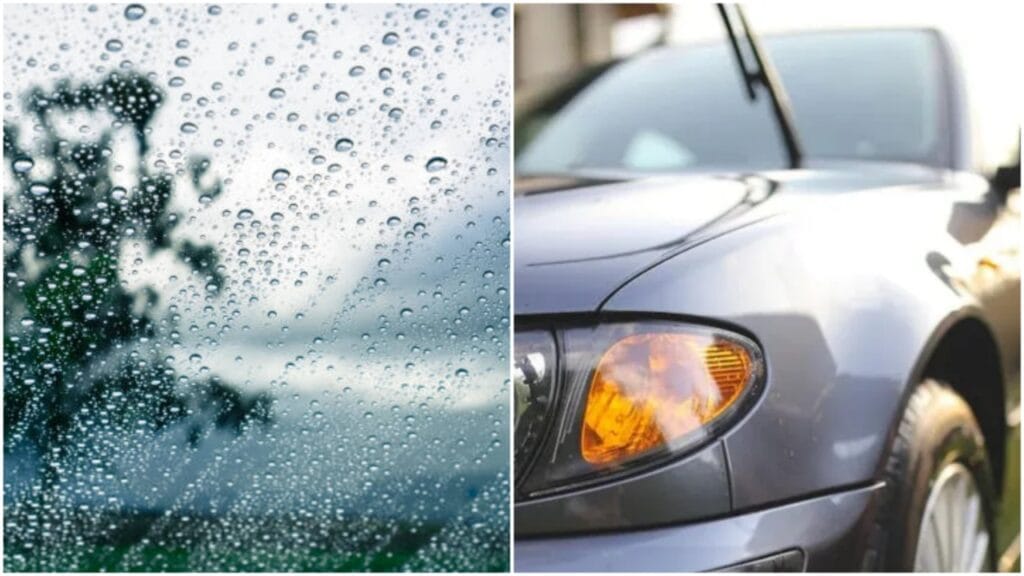
It’s not just the outside that impacts your view. The interior side of the glass can also contribute to haze, and dust from air vents accumulates inside the car.
Residue from cleaners or air fresheners also sticks to the inside of the windshield. That’s why cleaning both sides of the windshield every so often keeps the entire surface clear.
A Quick Reminder to Inspect for Chips and Cracks
Sometimes, small chips and cracks can trap particles, which makes haze even worse. Dirt settles in those tiny imperfections, making the windshield dull and patchy.
If you notice any chips, it’s best to get them filled before they expand. This little preventative step ensures grime doesn’t get trapped in hard-to-clean spots and keeps your windshield looking clear and smooth.
FAQ’s
How to clean haze off inside windshield?
Haze inside your windshield isn’t just annoying; it’s dangerous. It’s usually caused by off-gassing from your car’s plastics, dirt, or condensation. To clean it, start with a microfiber cloth.
Dry wiping removes loose dust. Then, spray a good glass cleaner directly onto the fabric, not the glass. This avoids drips that streak. Wipe in circular motions, then follow with vertical swipes for a clear finish.
Mix equal vinegar and water for extra power if the haze is stubborn. Don’t forget to clean the dashboard too. Dust there rises and sticks to the glass over time.
Keeping the inside clean helps prevent haze from building up again. Regular cleaning keeps your view crystal clear and safe.
Windshield streaks won’t go away?
Windshield streaks that won’t disappear can be frustrating and dangerous, mainly when they affect visibility. The problem often starts with dirt, oil, or residue on the glass or wiper blades.
To fix it, start by thoroughly cleaning the windshield. Use a dedicated glass cleaner or a mixture of water and vinegar. Avoid ammonia-based cleaners as they can leave streaks.
Wipe with a microfiber cloth, as paper towels can leave lint. Next, inspect the wiper blades. Worn or dirty blades are a common cause of streaks.
Clean them with rubbing alcohol or replace them if they’re damaged. Make sure your windshield washer fluid is fresh and suited for the season.
Hard water or an old fluid mix can leave a residue. If the streaks persist, check for scratches or damage on the windshield. A scratch can catch dirt and create lines. Applying a glass polish or seeking professional repair can help.
How do you get rid of greasy film on the windshield?
Getting rid of a greasy film on your windshield takes patience and the right approach. To avoid streaks, start with a good glass cleaner, ideally ammonia-free.
Spray it directly on the glass. To avoid overspray, you can also apply it to a microfiber cloth. Wipe the windshield in a circular motion, then switch to up-and-down and side-to-side strokes.
This helps lift the film thoroughly. If you’re dealing with a stubborn layer, add isopropyl alcohol to your cleaning mix. You also use a tiny dab of dish soap in warm water.
Avoid paper towels, as they can leave lint. After cleaning, rinse with clean water and wipe it dry.
The film on the windshield won’t come off?
When windshield film doesn’t come off, it’s time to try a few more profound cleaning methods. First, mix a solution with equal parts white vinegar and distilled water—vinegar cuts through tough grease without leaving a residue.
Spray this on the glass and let it sit for a minute. This helps break down the film. Then, wipe it with a microfiber cloth in circular motions. If the film lingers, add a small amount of isopropyl alcohol to the solution. It can dissolve even stubborn residue.
You can also use a clay bar, a detailing tool to remove embedded grime. Lightly glide the clay over the windshield with some glass cleaner or lubricant. This technique can lift off residues that regular cleaning can’t touch.
How do you remove road film from a car windshield?
To remove road film from your car windshield, start with a mix of equal parts distilled water and white vinegar. This combination cuts through the dirt and oily residue without leaving streaks.
Spray it onto the windshield and let it sit for a minute to loosen the grime. Use a microfiber cloth to wipe the glass in circular motions, followed by side-to-side strokes for thorough coverage.
If a stubborn film remains, add a small amount of isopropyl alcohol. You can also use a dedicated glass cleaner with more cleaning power. Try a clay bar designed for automotive glass for the most challenging layers.
Rub the clay lightly across the windshield. Use some glass cleaner or water as a lubricant. This method helps lift out embedded dirt and film. Once satisfied, rinse with water and dry the glass with a clean microfiber cloth.
What causes windshield haze?
Windshield haze usually results from a combination of internal and external factors. Inside, off-gassing from plastic and vinyl parts—especially in newer cars—releases chemicals that settle on the glass.
This creates a hazy film that gets worse with heat. Dirt, oils, and smoke particles from the cabin also stick to the windshield over time. Externally, road grime, exhaust residue, and rainwater spots contribute to haze buildup.
When the wipers move across the glass, they can spread these contaminants. They don’t remove them, especially if the wipers are old or dirty. Temperature changes and humidity can make the haze more noticeable, fogging the glass or causing streaks.
Conclusion
Haze seems like a minor problem, but it can sneak up on you if left unchecked. Regular cleaning is essential. Use a few extra tricks, like vinegar or water repellents.
Stay mindful of weather conditions to help keep them under control. Think of it as windshield upkeep—small efforts that add up to a clear view.
With a haze-free windshield, every drive is safer and more enjoyable.

